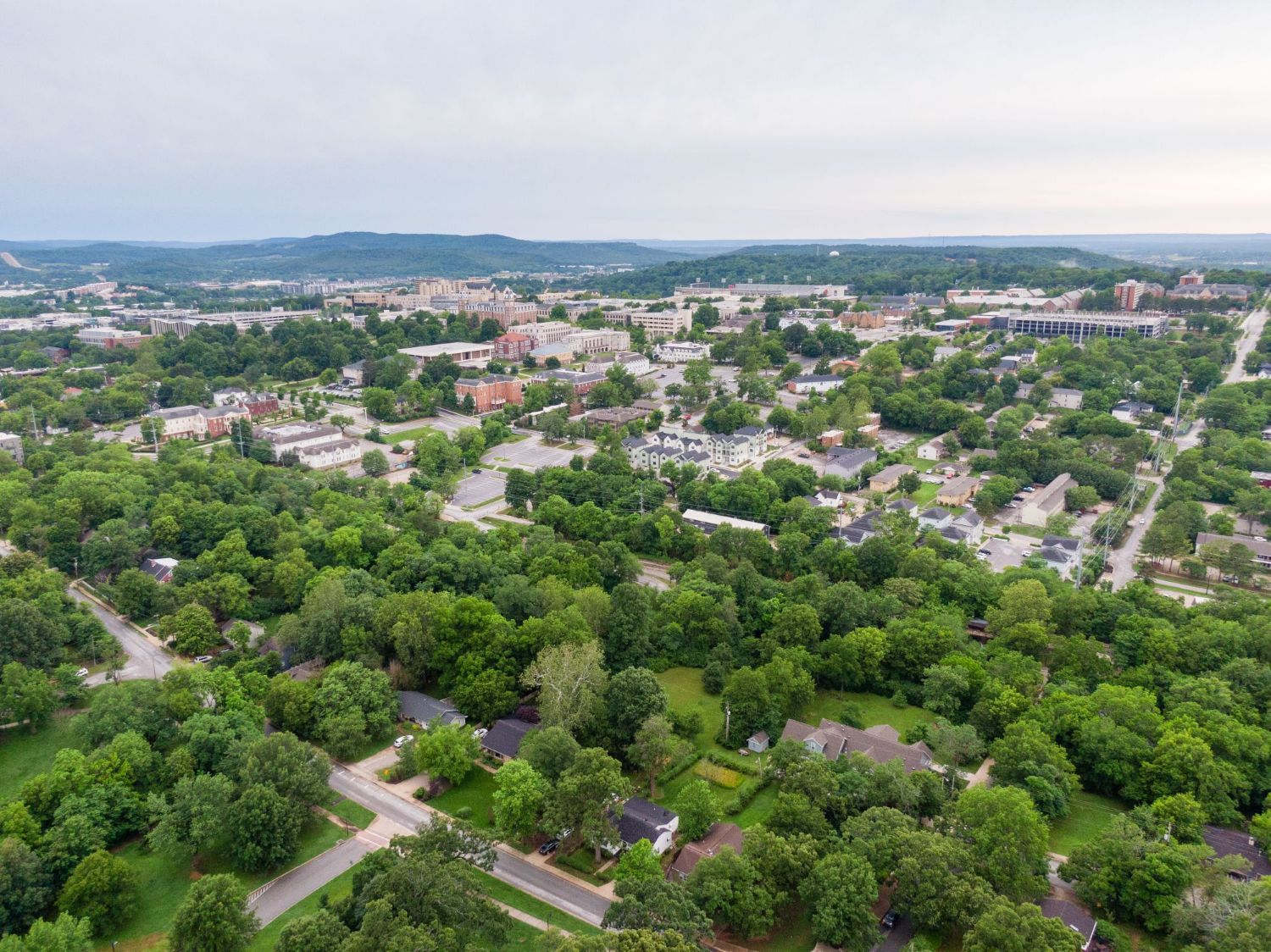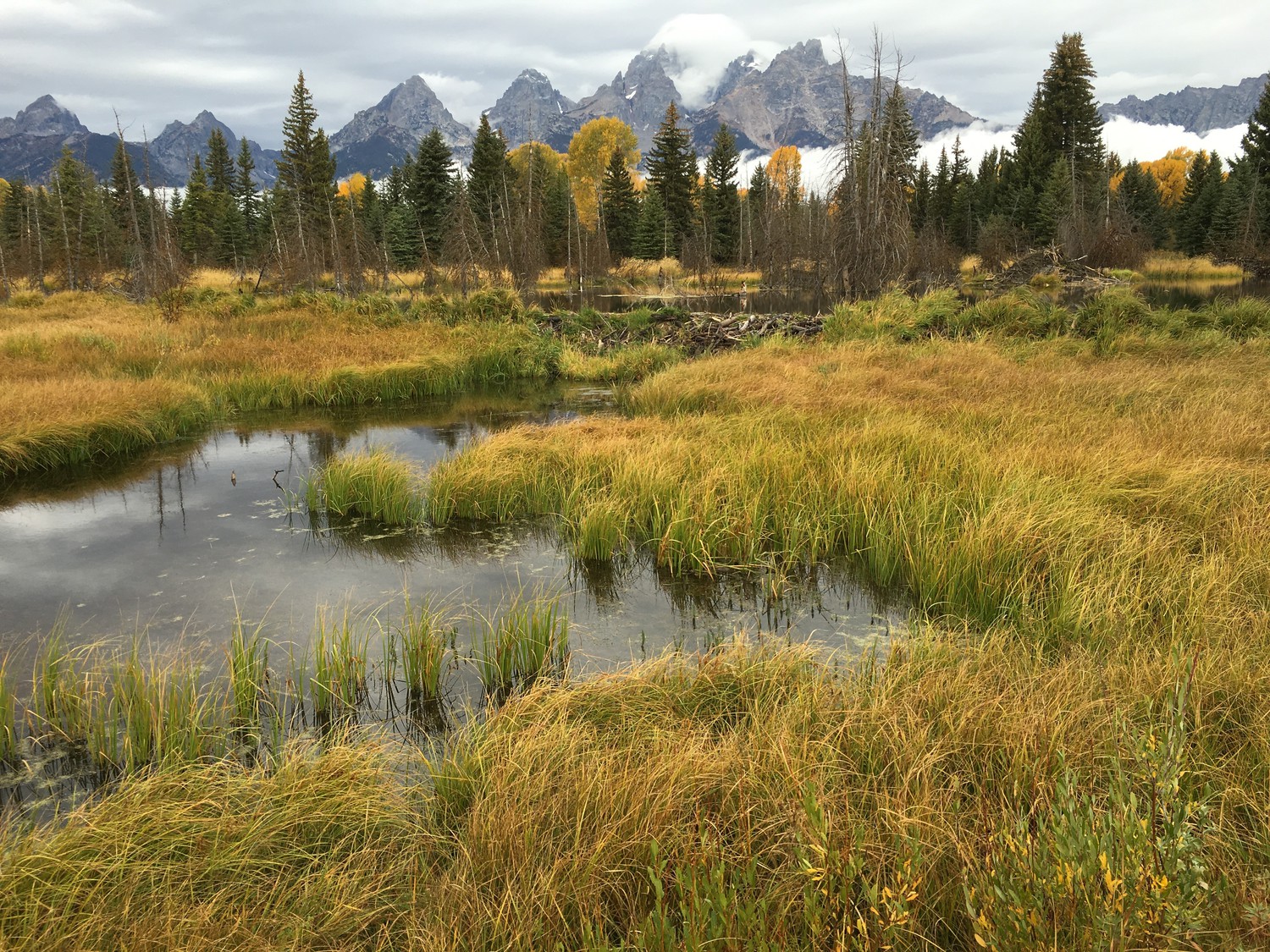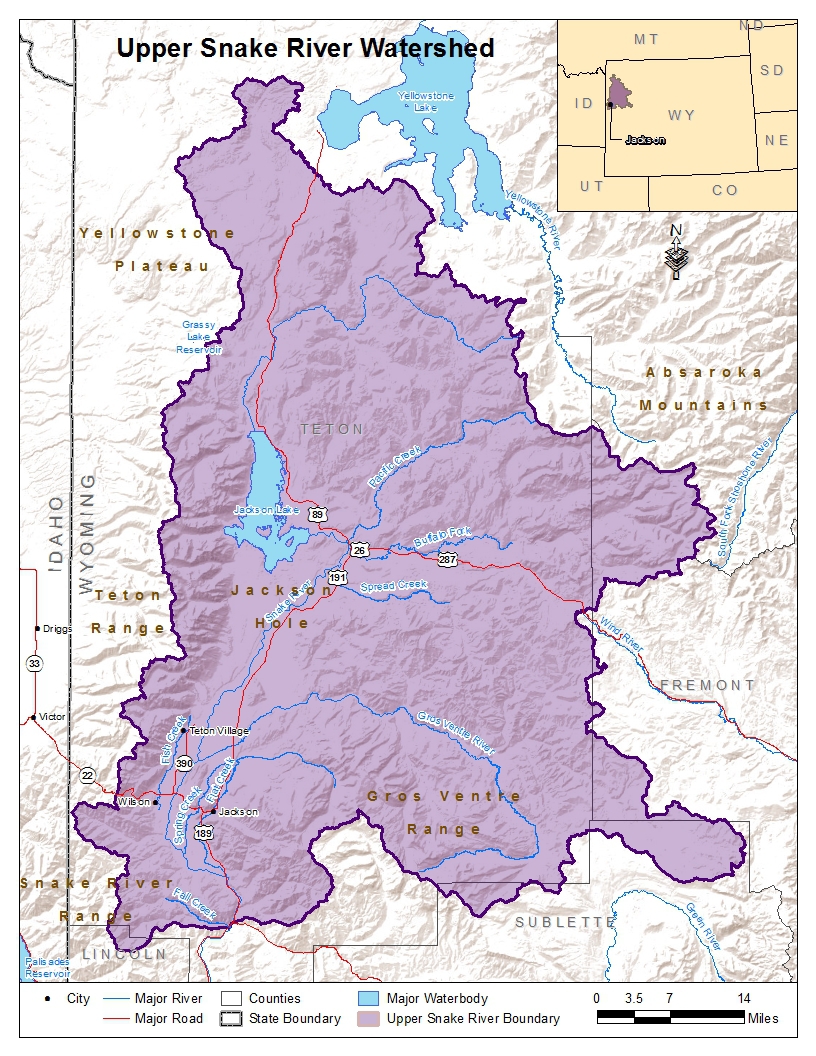The 2,771-square-mile Snake River watershed is one of the most iconic landscapes of the American West. Millions of tourists visit the Grand Teton and Yellowstone National Parks every year. Preservation of this, the core of the largest natural ecosystem in the contiguous U.S., is paramount to both the wild and human residents of the area. To ensure that this watershed continues to function as well as possible, the Wyoming Water Development Commission engaged our expertise for a Level I watershed survey.
Tourists come to experience the Wild West by seeing the natural beauty and the historic ranches that still share the landscape. These ranches work to coexist within the watershed by maintaining sustainable water and natural resources management practices. Many of the water conveyance systems are more than 100 years old, in disrepair, and in need of improvements to minimize further impacts to the natural environment.
To ensure that this watershed continues to function as well as possible, the Wyoming Water Development Commission engaged our expertise for a Level I watershed survey.
Our team of geologists and engineers collaborated with Steady Stream Hydrology Inc. and Ron E. Vore, Ph.D., to evaluate the area, which included irrigated land, rangeland, wetlands, and streams. Our completed study showed opportunities for improvements in the watershed’s irrigation systems, livestock/wildlife upland watering sites, fire suppression water storage systems, stream channel condition and stability, among others.
As the prime consultant for the Wyoming Water Development Commission Upper Snake River Level I Watershed Study, Olsson was responsible for leading the watershed study and serving as the project geologist and engineer of record.
By completing this comprehensive watershed study, the private and public land stewards of the area are now eligible for watershed improvement funding through the Wyoming Water Development Commission. With the proposed improvements, the Upper Snake River watershed’s natural wonders will continue to thrive, keeping the wildlife—and the tourists—returning for centuries to come.

































.avif)





































.avif)






















